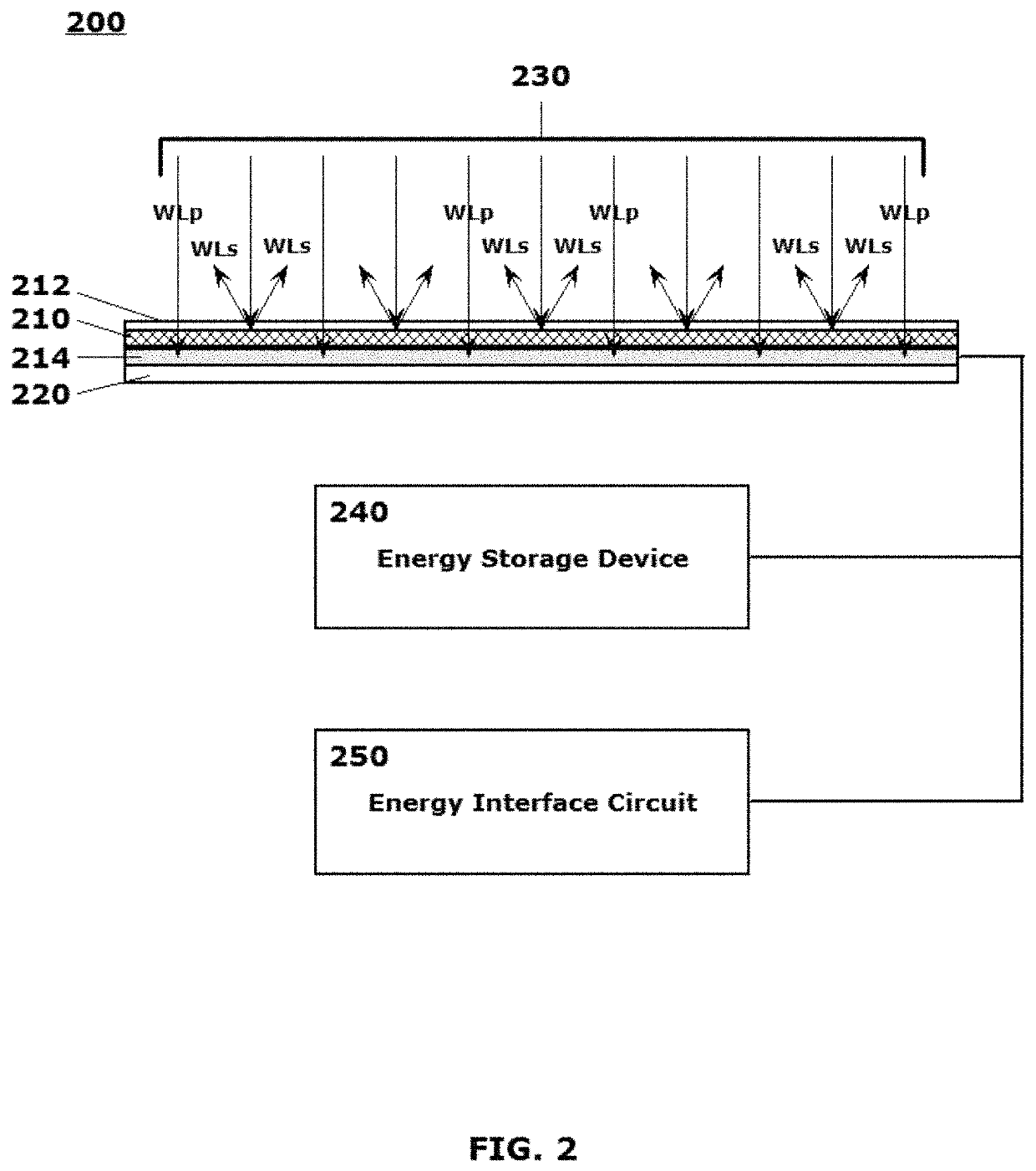Methods for making compositions of materials for forming coatings and layered structures including elements for scattering and passing selectively tunable wavelengths of electromagnetic energy
a technology of electromagnetic energy and compositions, applied in the direction of diffusing elements, anti-reflective coatings, instruments, etc., can solve the problems of limiting the ability to see, adversely affecting the light transmissive properties of ambient light incident to the lighted side of the mirror or tinted window, and generally no way to modify the unfortunate aesthetic drawbacks presented by typical pv cell installations. , to achieve the effect of “tricking” the human body, greater latitud
- Summary
- Abstract
- Description
- Claims
- Application Information
AI Technical Summary
Benefits of technology
Problems solved by technology
Method used
Image
Examples
Embodiment Construction
[0002]This disclosure describes forming a particular multi-layer micron-sized particle that is substantially transparent, yet that exhibits selectable coloration based on the physical properties of the particle layers manipulated in the forming process, resulting in the particles exhibiting controllable refractive indices. Also, material suspensions are provided for the particles to render them deliverable to form unique electromagnetic energy transmissive layers on substrates. These disclosed layers, once formed, selectively scatter specific wavelengths of electromagnetic energy back in an incident direction while allowing remaining wavelengths to pass therethrough, including uniquely implementing optical light scattering techniques in such energy (or light) transmissive layers to make those layers appear selectively opaque when observed from a light incident side, while allowing at least 50%, and as much as 80+%, of the energy impinging on the light incident side to pass through t...
PUM
| Property | Measurement | Unit |
|---|---|---|
| particle size | aaaaa | aaaaa |
| particle size | aaaaa | aaaaa |
| thickness | aaaaa | aaaaa |
Abstract
Description
Claims
Application Information
 Login to View More
Login to View More - R&D
- Intellectual Property
- Life Sciences
- Materials
- Tech Scout
- Unparalleled Data Quality
- Higher Quality Content
- 60% Fewer Hallucinations
Browse by: Latest US Patents, China's latest patents, Technical Efficacy Thesaurus, Application Domain, Technology Topic, Popular Technical Reports.
© 2025 PatSnap. All rights reserved.Legal|Privacy policy|Modern Slavery Act Transparency Statement|Sitemap|About US| Contact US: help@patsnap.com



